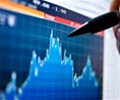In World Economy News 08/06/2018

The euro zone began the year with slower economic growth as fears of a trade war with the United States appeared to take their toll, official data showed on Thursday.
The economic slowdown in the 19-country bloc in the first quarter of the year was caused by lower trade and coincided with U.S. President Donald Trump’s threats in March of high duties on steel and aluminium imports from global partners, including the EU – threats turned into actual tariffs last week.
The euro zone’s output expanded by 0.4 percent on the quarter in the first three months of the year, a marked deceleration from 0.7 percent growth in the previous quarter, data released by EU statistics office Eurostat showed, confirming earlier estimates.
On the year, growth slowed to 2.5 percent from 2.8 percent in the previous quarter.
Germany, the bloc’s largest economy and main exporter, saw its output expansion halved to 0.3 percent on the quarter in the January-March period.
Reduced trade contributed to the slower pace of the expansion, which was propped up by increased consumption and investments.
Euro zone exports fell by 0.4 percent quarter-on-quarter and imports dropped by 0.1 percent, in a sign of slower global trade.
In the previous quarter, euro zone exports grew 2.2 percent and imports rose by 1.5 percent.
The drop in exports contributed to a loss of 0.2 percentage points to the euro zone output, data show.
The trade losses were offset by growing consumer spending and an increase in investments.
Household consumption rose by 0.5 percent in the currency bloc, from 0.2 percent in the previous quarter, in a sign that the bloc’s economy could be relying more on domestic spending.
“However, this is less encouraging than it first seems,” Capital Economics, a research firm, said in a note, adding the rise of consumer spending was likely mostly due to higher consumption of heating and fuel in colder-than-usual winter months, rather than being a structural shift in consumers’ habits.
Gross fixed capital formation, a measure for investments, also grew by 0.5 percent in the first quarter, but much less than in the previous quarter when it rose by 1.3 percent.
The United States also grew less, slowing to 0.5 percent in the first quarter from 0.7 percent.
Source: Reuters (Reporting by Francesco Guarascio; Editing by Janet Lawrence)